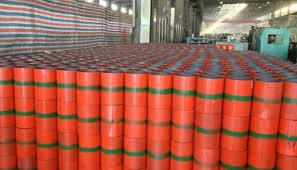- Afrikaans
- Albanian
- Amharic
- Arabic
- Armenian
- Azerbaijani
- Basque
- Belarusian
- Bengali
- Bosnian
- Bulgarian
- Catalan
- Cebuano
- Corsican
- Croatian
- Czech
- Danish
- Dutch
- English
- Esperanto
- Estonian
- Finnish
- French
- Frisian
- Galician
- Georgian
- German
- Greek
- Gujarati
- Haitian Creole
- hausa
- hawaiian
- Hebrew
- Hindi
- Miao
- Hungarian
- Icelandic
- igbo
- Indonesian
- irish
- Italian
- Japanese
- Javanese
- Kannada
- kazakh
- Khmer
- Rwandese
- Korean
- Kurdish
- Kyrgyz
- Lao
- Latin
- Latvian
- Lithuanian
- Luxembourgish
- Macedonian
- Malgashi
- Malay
- Malayalam
- Maltese
- Maori
- Marathi
- Mongolian
- Myanmar
- Nepali
- Norwegian
- Norwegian
- Occitan
- Pashto
- Persian
- Polish
- Portuguese
- Punjabi
- Romanian
- Russian
- Samoan
- Scottish Gaelic
- Serbian
- Sesotho
- Shona
- Sindhi
- Sinhala
- Slovak
- Slovenian
- Somali
- Spanish
- Sundanese
- Swahili
- Swedish
- Tagalog
- Tajik
- Tamil
- Tatar
- Telugu
- Thai
- Turkish
- Turkmen
- Ukrainian
- Urdu
- Uighur
- Uzbek
- Vietnamese
- Welsh
- Bantu
- Yiddish
- Yoruba
- Zulu
Specifications and Standards for PUP Joint Design and Engineering Applications in Various Industries
Understanding PUP Joint Specifications
PUP joint specifications play an essential role in the field of engineering, particularly in pipeline and structural applications. The term PUP refers to pipe-up, which generally implies joints made for connecting pipes. These specifications outline the critical parameters that ensure the joint's structural integrity, durability, and functionality, thereby facilitating safe and efficient fluid transport or structural connections.
Significance of PUP Joints
PUP joints are particularly significant in industries such as oil and gas, water supply, and construction. In these sectors, pipes are used to transport liquids or gases over long distances and in varying environmental conditions. The reliability of piping systems hinges on the quality of the joints. Defective joints can lead to leaks, structural failures, or catastrophic accidents, making adherence to PUP joint specifications crucial.
Components of PUP Joint Specifications
Understanding PUP joint specifications involves familiarizing oneself with several key components
1. Material Specifications The materials used in making PUP joints must be suitable for the intended application. Common materials include carbon steel, stainless steel, and various alloys. Material selection impacts the strength, corrosion resistance, and temperature tolerance of the joint.
2. Dimensions Specifications include precise dimensions such as diameter, wall thickness, and length. These dimensions must conform to industry standards to ensure compatibility with other piping systems and components.
pup joint specifications

3. Pressure Ratings PUP joint specifications detail the maximum and minimum pressure ratings the joint can withstand. This is particularly critical in high-pressure applications like oil and gas pipelines, where pressure fluctuations can be significant.
4. Connection Types Various methods exist for connecting pipes, including welding, threading, and flanging. Each connection type has its advantages and disadvantages, which are outlined in the specifications to guide engineers in selecting the most appropriate method for their project.
5. Testing and Inspection Protocols To ensure safety and reliability, PUP joints must undergo rigorous testing and inspection. Specifications detail these protocols, including hydrostatic testing, visual inspections, and non-destructive testing methods like ultrasonic or radiographic testing. These processes verify that the joints meet required safety standards and performance criteria.
6. Compliance Standards PUP joint specifications must comply with relevant international and national standards such as ASME, ASTM, and API. Compliance ensures that the joints are manufactured and tested according to recognized safety and quality benchmarks.
Challenges in PUP Joint Implementation
Implementing PUP joint specifications is not without challenges. Variability in material quality, non-compliance with specifications during manufacturing, and improper installation techniques can all lead to joint failure. Furthermore, environmental factors such as temperature fluctuations and soil conditions can affect the performance of joints over time. Therefore, thorough planning and adherence to specifications are paramount.
Conclusion
PUP joint specifications are foundational in the construction of safe and reliable piping and structural systems. They encompass material selection, dimensions, pressure ratings, connection types, testing protocols, and compliance standards. Understanding and strictly adhering to these specifications is crucial for engineers and industry professionals. As the demand for efficient and safe transport of fluids in various industries continues to grow, the importance of robust PUP joint specifications cannot be overstated. Investing time and resources in ensuring compliance with these specifications will ultimately result in safer and more efficient systems, benefitting the entire industry.
-
Tubing Pup Joints: Essential Components for Oil and Gas OperationsNewsJul.10,2025
-
Pup Joints: Essential Components for Reliable Drilling OperationsNewsJul.10,2025
-
Pipe Couplings: Connecting Your World EfficientlyNewsJul.10,2025
-
Mastering Oilfield Operations with Quality Tubing and CasingNewsJul.10,2025
-
High-Quality Casing Couplings for Every NeedNewsJul.10,2025
-
Boost Your Drilling Efficiency with Premium Crossover Tools & Seating NipplesNewsJul.10,2025







